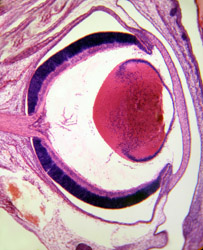Building the picture of visual processing
The key to the success of the EU-funded project Neural Circuits was the use of retinal nerve cells in a mouse model because the components of a mouse retina can be activated easily and monitored. Transgenic mice with genetically labelled cells were used to classify single neuron types. In particular, amacrine cells were incorporated with exogenous proteins so they could be activated or deactivated as required. Amacrine cells are interneurons that usually connect with retinal ganglion cells. The essence of the retina lies in differential effects in different light levels – rods are active in dim or scotopic conditions and cones are active in daylight conditions. The researchers made use of two-photon microscopy and a mouse expressing an enhanced yellow fluorescent protein (EYFP), and recorded activity from a large ON ganglion cell type, typically located near the surface of the retina (known as PV1). Previous research shows that the PV1 cell has no surround for stimuli that activates only rods, while for light levels adequate for cone stimulation the PV1 cell shows clear centre surround antagonism. This phenomenon enables edge detection and contrast enhancement within the visual cortex. The scientists found that the threshold for the ON cone ganglion (bipolar) cells coincided exactly with the light level when inhibition can be detected in the PV1 cells. The process of selectively activating the inhibitory surround was then determined by chemical manipulation and electrophysiological measurement. The experimental evidence points to amacrine cells that use gamma-aminobutyric acid (GABA) as a neurotransmitter being responsible for mediation of the inhibitory surround. Both the GABA inhibitor picrotoxin and the sodium channel blocker tetrodoxin reduced the inhibitory currents while the level of excitation was unaffected using the glycinergic antagonist strychnine. In addition, the GABAergic inhibition is only present in light levels sufficient to activate cones and is mediated by ON bipolar cone cells. Overall, the results of the project highlighted that a neural circuit switch turns on a wide field spiking GABAergic amacrine cells by an electrical coupling with ON cone bipolar cells that can be toggled (switched on and off) by cone activation. The results of the Neural Circuits project have shown how retinal visual information is processed. The techniques used by the researchers are also applicable to the study of other brain regions.







